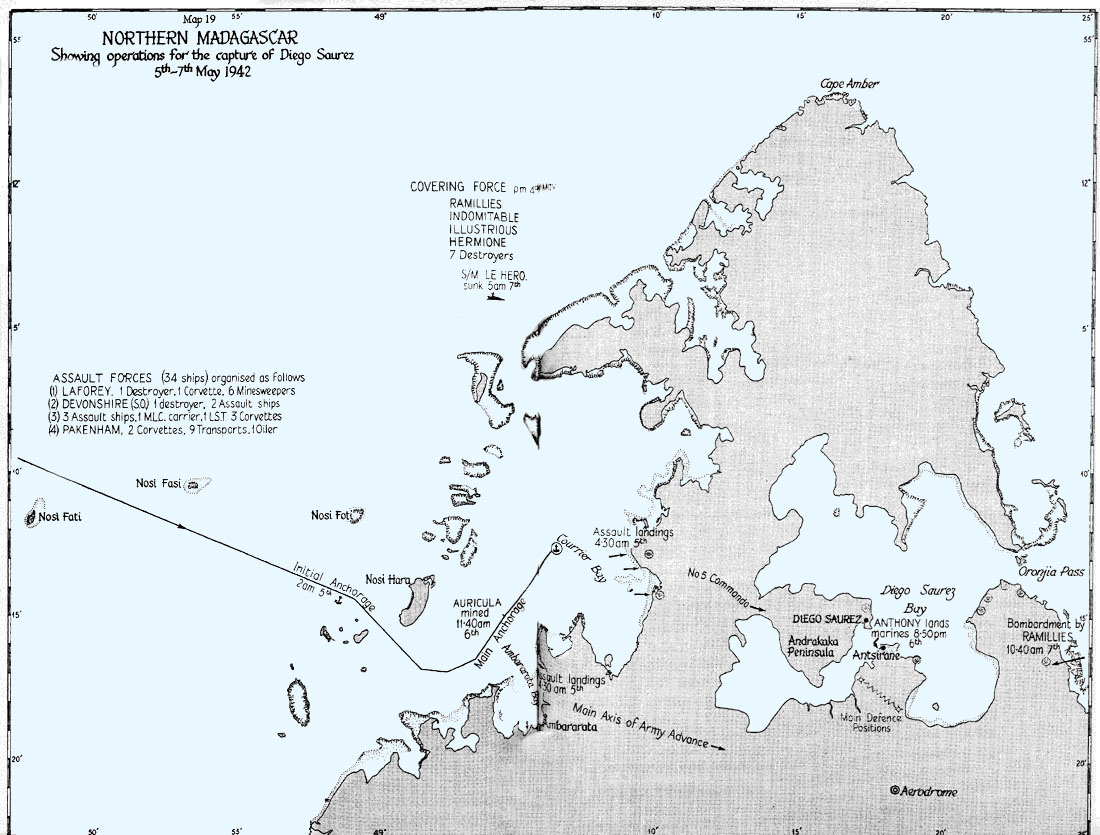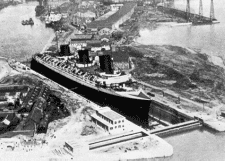|
1939–1945 Star
The 1939–1945 Star is a military campaign medal instituted by the United Kingdom on 8 July 1943 for award to British and Commonwealth forces for service in the Second World War. Two clasps were instituted to be worn on the medal ribbon, Battle of Britain and Bomber Command.Stephen Stratford Medals site: British Military & Criminal History, 1900 to 1999. 1939–45 Star (Access date 1 April 2015)Forces War Records, Medals, 1939–1945 Star (Access date 2 April 2015) The Second World War Stars |
George VI
George VI (Albert Frederick Arthur George; 14 December 1895 – 6 February 1952) was King of the United Kingdom and the Dominions of the British Commonwealth from 11 December 1936 until his death in 1952. He was also the last Emperor of India from 1936 until the British Raj was dissolved in August 1947, and the first Head of the Commonwealth following the London Declaration of 1949. The future George VI was born in the reign of his great-grandmother Queen Victoria; he was named Albert at birth after his great-grandfather Albert, Prince Consort, and was known as "Bertie" to his family and close friends. His father ascended the throne as George V in 1910. As the second son of the king, Albert was not expected to inherit the throne. He spent his early life in the shadow of his elder brother, Prince Edward, the heir apparent. Albert attended naval college as a teenager and served in the Royal Navy and Royal Air Force during the First World War. In 1920, he was made ... [...More Info...] [...Related Items...] OR: [Wikipedia] [Google] [Baidu] |
Pacific Star
The Pacific Star is a military campaign medal instituted by the United Kingdom in May 1945 for award to British and Commonwealth forces who served in the Pacific Campaign from 1941 to 1945, during the Second World War. One clasp, Burma, was instituted to be worn on the medal ribbon. The Second World War Stars On 8 July 1943, the Star (later named the Star) and the Africa Star became the first two campaign stars instituted by the United Kingdom, and by May 1945 a total of eight stars and nine clasps had been established to reward campaign service during the Second World War. One more campaign star, the Arctic Star, and one more clasp, the Bomber Command Clasp, were belatedly added on 26 February 2013, more than sixty-seven years after the end of the war. [...More Info...] [...Related Items...] OR: [Wikipedia] [Google] [Baidu] |
Royal Mint
The Royal Mint is the United Kingdom's oldest company and the official maker of British coins. Operating under the legal name The Royal Mint Limited, it is a limited company that is wholly owned by His Majesty's Treasury and is under an exclusive contract to supply the nation's coinage. As well as minting circulating coins for the UK and international markets, The Royal Mint is a leading provider of precious metal products. The Royal Mint was historically part of a series of mints that became centralised to produce coins for the Kingdom of England, all of Great Britain, the United Kingdom, and nations across the Commonwealth. The Royal Mint operated within the Tower of London for several hundred years before moving to what is now called Royal Mint Court, where it remained until the 1960s. As Britain followed the rest of the world in decimalising its currency, the Mint moved from London to a new 38-acre (15 ha) plant in Llantrisant, Glamorgan, Wales, where it has remained s ... [...More Info...] [...Related Items...] OR: [Wikipedia] [Google] [Baidu] |
Battle Of Madagascar
The Battle of Madagascar (5 May – 6 November 1942) was a British campaign to capture the Vichy French-controlled island Madagascar during World War II. The seizure of the island by the British was to deny Madagascar's ports to the Imperial Japanese Navy and to prevent the loss or impairment of the Allied shipping routes to India, Australia and Southeast Asia. It began with Operation Ironclad, the seizure of the port of Diego-Suarez (now Antsiranana) near the northern tip of the island, on 5 May 1942. A subsequent campaign to secure the entire island, Operation Stream Line Jane, was opened on 10 September. The Allies broke into the interior, linking up with forces on the coast and secured the island by the end of October. Fighting ceased and an armistice was granted on 6 November. This was the first large-scale operation by the Allies combining sea, land and air forces. The island was placed under Free French control.Rigge p. 100 Background Geopolitical Diego-Suarez is ... [...More Info...] [...Related Items...] OR: [Wikipedia] [Google] [Baidu] |
Japanese Conquest Of Burma
The Japanese invasion of Burma was the opening phase of the Burma campaign in the South-East Asian theatre of World War II, which took place over four years from 1942 to 1945. During the first year of the campaign (December 1941 to mid-1942), the Japanese Army (with aid from Thai Phayap Army and Burmese insurgents) drove British Empire and Chinese forces out of Burma, then began the Japanese occupation of Burma and formed a nominally independent Burmese administrative government. Background British rule in Burma Before the Second World War broke out, Burma was part of the British Empire, having been progressively occupied and annexed following three Anglo-Burmese wars in the 19th century. Initially governed as part of British India, Burma was formed into a separate colony under the Government of India Act 1935. Under British rule, there had been substantial economic development but the majority Bamar community was becoming increasingly restive. Among their concerns were t ... [...More Info...] [...Related Items...] OR: [Wikipedia] [Google] [Baidu] |
Anglo-Iraqi War
The Anglo-Iraqi War was a British-led Allies of World War II, Allied military campaign during the Second World War against the Kingdom of Iraq under Rashid Ali, Rashid Gaylani, who had seized power in the 1941 Iraqi coup d'état, with assistance from Germany and Italy. The campaign resulted in the downfall of Gaylani's government, the re-occupation of Iraq by the British, and the return to power of the Regent of Iraq, Prince 'Abd al-Ilah, a British ally. Background Mandatory Iraq The Kingdom of Iraq (also referred to as Mesopotamia) was governed by Great Britain under a League of Nations mandate, the British Mandate of Mesopotamia, until 1932 when Iraq became nominally independent. Before granting independence, Britain concluded the Anglo-Iraqi Treaty (1930), Anglo-Iraqi Treaty of 1930. The treaty included permission to establish Royal Air Force station, military bases for British use and provide the facilities for the unrestricted movement of British forces through the cou ... [...More Info...] [...Related Items...] OR: [Wikipedia] [Google] [Baidu] |
Dieppe Raid
Operation Jubilee or the Dieppe Raid (19 August 1942) was an Allied amphibious attack on the German-occupied port of Dieppe in northern France, during the Second World War. Over 6,050 infantry, predominantly Canadian, supported by a regiment of tanks, were put ashore from a naval force operating under protection of Royal Air Force (RAF) fighters. The port was to be captured and held for a short period, to test the feasibility of a landing and to gather intelligence. German coastal defences, port structures and important buildings were to be demolished. The raid was intended to boost Allied morale, demonstrate the commitment of the United Kingdom to re-open the Western Front and support the Soviet Union, fighting on the Eastern Front. Aerial and naval support was insufficient to enable the ground forces to achieve their objectives; the tanks were trapped on the beach and the infantry was largely prevented from entering the town by obstacles and German fire. After less than si ... [...More Info...] [...Related Items...] OR: [Wikipedia] [Google] [Baidu] |
St Nazaire Raid
The St Nazaire Raid or Operation Chariot was a British amphibious attack on the heavily defended Normandie dry dock at St Nazaire in German-occupied France during the Second World War. The operation was undertaken by the Royal Navy (RN) and British Commandos under the auspices of Combined Operations Headquarters on 28 March 1942. St Nazaire was targeted because the loss of its dry dock would force any large German warship in need of repairs, such as , sister ship of , to return to home waters by running the gauntlet of the Home Fleet of the Royal Navy and other British forces, via the English Channel or the North Sea. The obsolete destroyer , accompanied by 18 smaller craft, crossed the English Channel to the Atlantic coast of France and was rammed into the Normandie dry dock south gate. The ship had been packed with delayed-action explosives, well hidden within a steel and concrete case, that detonated later that day, putting the dock out of service until 1948. A force o ... [...More Info...] [...Related Items...] OR: [Wikipedia] [Google] [Baidu] |
Battle Of France
The Battle of France (french: bataille de France) (10 May – 25 June 1940), also known as the Western Campaign ('), the French Campaign (german: Frankreichfeldzug, ) and the Fall of France, was the Nazi Germany, German invasion of French Third Republic, France during the Second World War. On 3 September 1939, France French declaration of war on Germany (1939), declared war on Germany following the German invasion of Poland. In early September 1939, France began the limited Saar Offensive and by mid-October had withdrawn to their start lines. German armies German invasion of Belgium (1940), invaded Belgium, German invasion of Luxembourg, Luxembourg and German invasion of the Netherlands, the Netherlands on 10 May 1940. Fascist Italy (1922-1943), Italy entered the war on 10 June 1940 and attempted an Italian invasion of France, invasion of France. France and the Low Countries were conquered, ending land operations on the Western Front (World War II), Western Front until the Normandy l ... [...More Info...] [...Related Items...] OR: [Wikipedia] [Google] [Baidu] |
Mentioned In Dispatches
To be mentioned in dispatches (or despatches, MiD) describes a member of the armed forces whose name appears in an official report written by a superior officer and sent to the high command, in which their gallant or meritorious action in the face of the enemy is described. In some countries, a service member's name must be mentioned in dispatches as a condition for receiving certain decorations. United Kingdom, British Empire, and Commonwealth of Nations Servicemen and women of the British Empire or the Commonwealth who are mentioned in despatches (MiD) are not awarded a medal for their actions, but receive a certificate and wear an oak leaf device on the ribbon of the appropriate campaign medal. A smaller version of the oak leaf device is attached to the ribbon when worn alone. Prior to 2014, only one device could be worn on a ribbon, irrespective of the number of times the recipient was mentioned in despatches. Where no campaign medal is awarded, the oak leaf is worn direc ... [...More Info...] [...Related Items...] OR: [Wikipedia] [Google] [Baidu] |
Rosette (design)
A rosette is a round, stylized flower design. Origin The rosette derives from the natural shape of the botanical rosette, formed by leaves radiating out from the stem of a plant and visible even after the flowers have withered. History The rosette design is used extensively in sculptural objects from antiquity, appearing in Mesopotamia, and in funeral steles' decoration in Ancient Greece. The rosette was another important symbol of Ishtar which had originally belonged to Inanna along with the Star of Ishtar. It was adopted later in Romaneseque and Renaissance architecture, and also common in the art of Central Asia, spreading as far as India where it is used as a decorative motif in Greco-Buddhist art. Ancient origins One of the earliest appearances of the rosette in ancient art is in early fourth millennium BC Egypt. Another early Mediterranean occurrence of the rosette design derives from Minoan Crete; Among other places, the design appears on the Phaistos Disc, re ... [...More Info...] [...Related Items...] OR: [Wikipedia] [Google] [Baidu] |







_Oak_Leaf_Cluster.jpg)